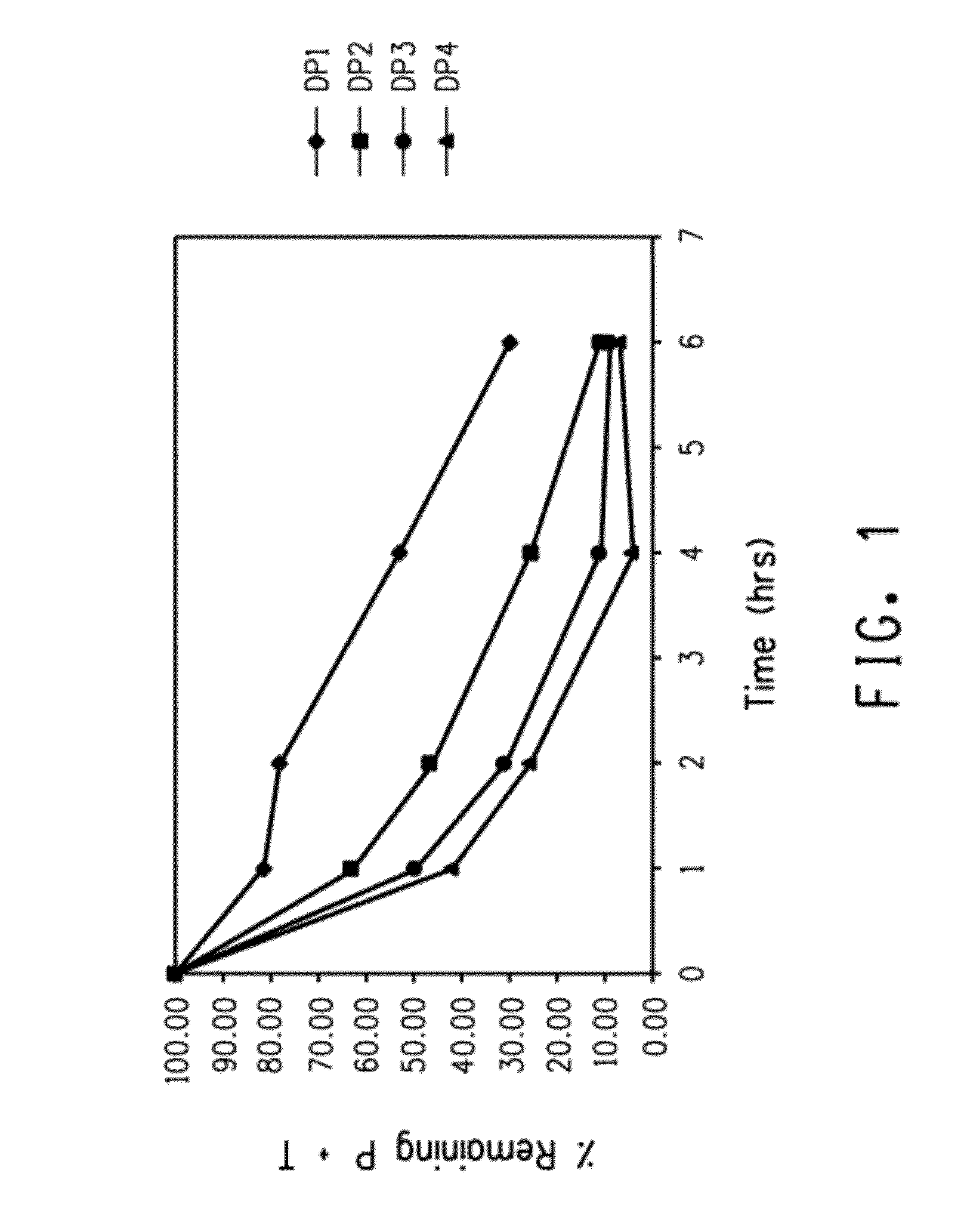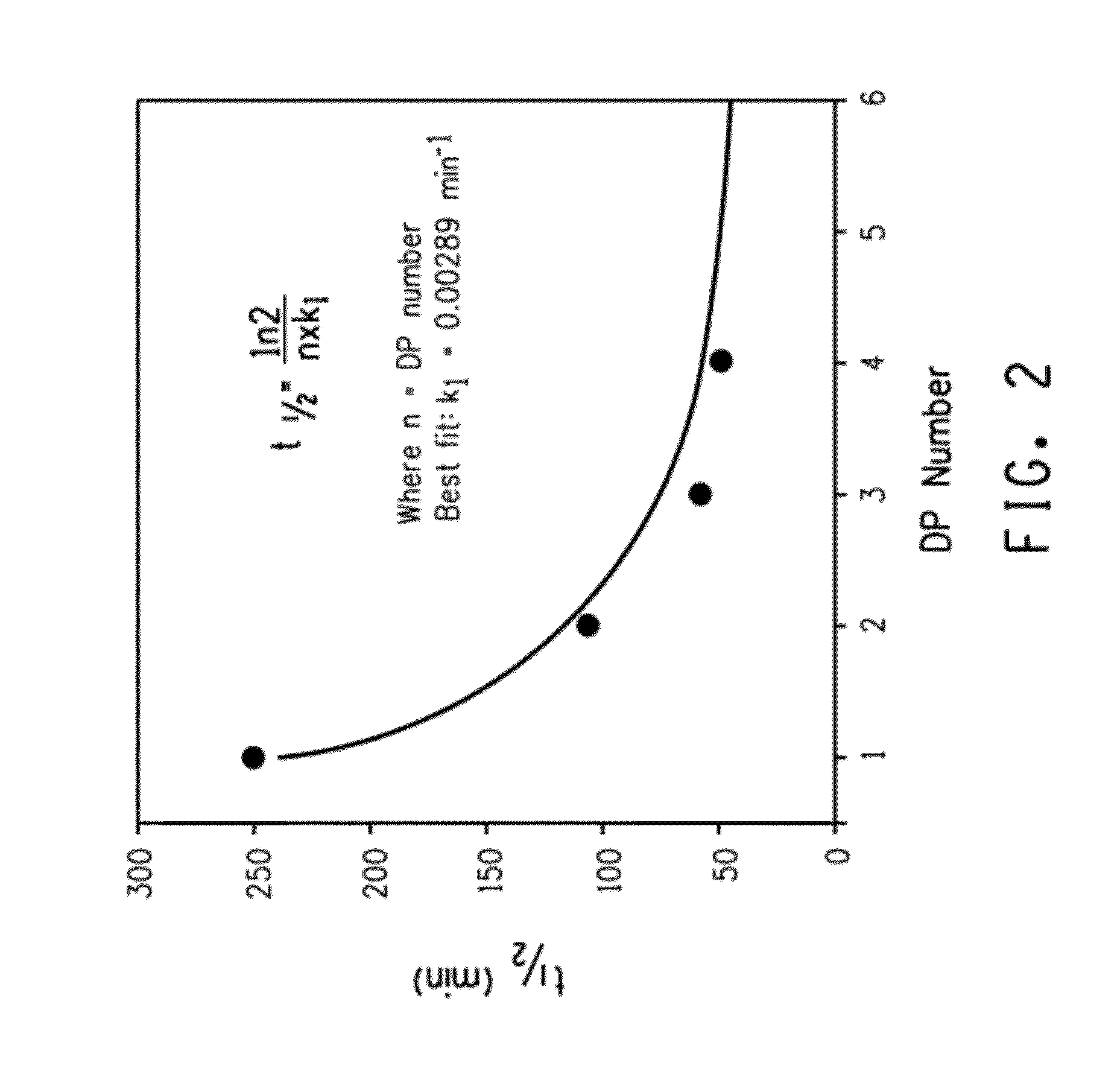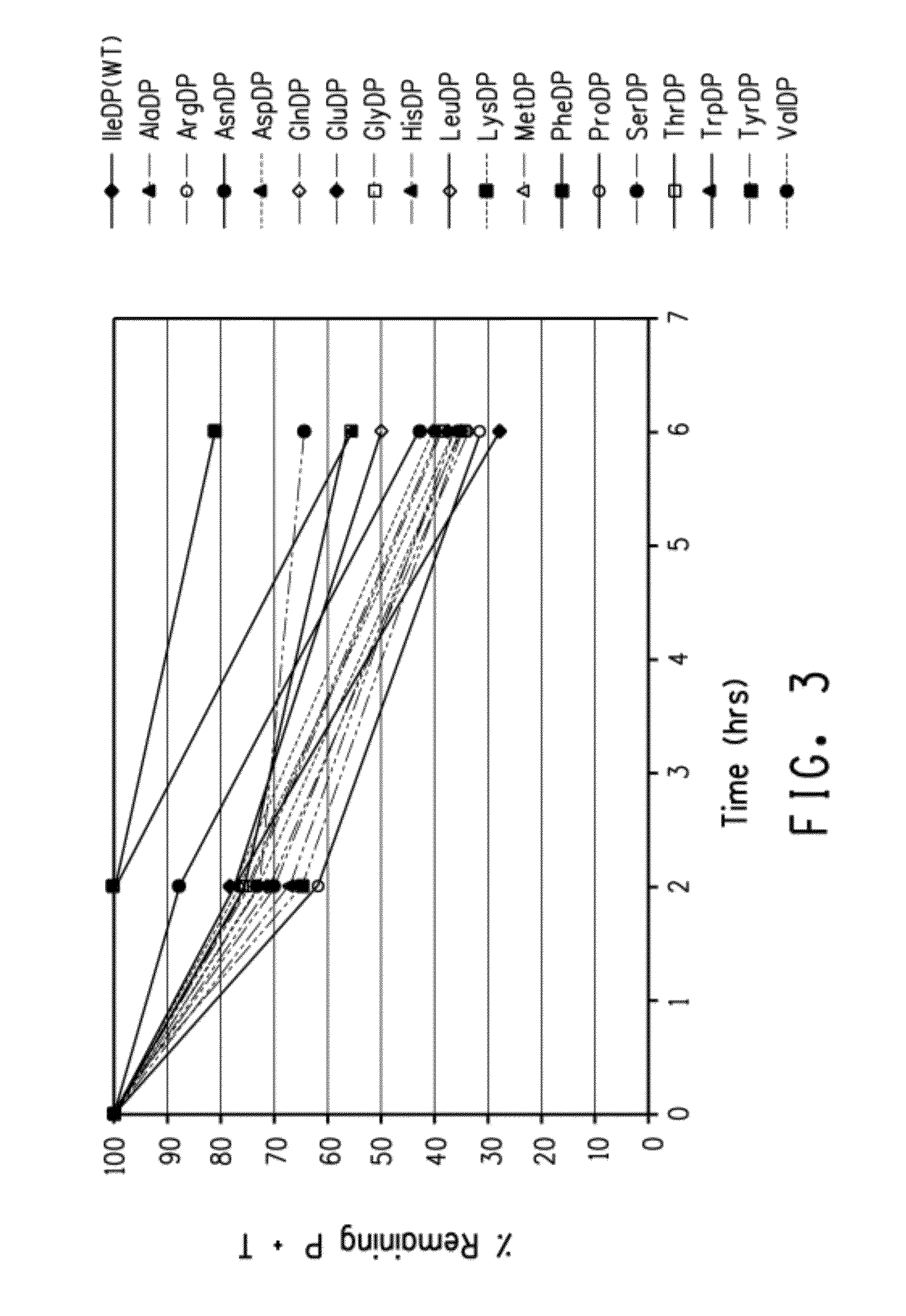Acid-cleavable linkers exhibiting altered rates of acid hydrolysis
a technology of acid hydrolysis and linkers, which is applied in the field of protein expression and purification of microbial cells, can solve the problems of poor yield, limited production capacity, and high method costs, and achieve the effect of easy separability
- Summary
- Abstract
- Description
- Claims
- Application Information
AI Technical Summary
Benefits of technology
Problems solved by technology
Method used
Image
Examples
example 1
Preparation of Plasmid pLX121
[0212]A genetic construct was prepared for evaluating the performance of the inventive acid-cleavable linker by fusing the linker to an inclusion body tag on one end, and a soluble peptide of interest at the linker's opposite end. The peptide of interest used in the present examples was prepared from a previously reported peptide-based triblock dispersant (U.S. Patent Application Publication No. 2005-0054752).
Cloning of the TBP1 Gene
[0213]The TBP1 gene, encoding the TBP1 peptide, was selected for evaluation of the inventive acid-cleavable linkers. The synthetic TBP1 peptide is peptide-based triblock dispersant comprising a carbon-black binding domain, a hydrophilic peptide linker, and a cellulose binding domain (see Example 15 of U.S. patent application Ser. No. 10 / 935,254, herein incorporated by reference).
[0214]The TBP1 gene (SEQ ID NO: 17) encoding the 68 amino acid peptide TBP101 (SEQ ID NO: 19) was assembled from synthetic oligonucleotides (Sigma-Ge...
example 2
Acid Hydrolysis of Peptide Linkers Containing Multiple DP Residues
[0225]This example demonstrates the enhanced rate of acid hydrolysis of a fusion peptide having a linker comprising more than one consecutively arranged aspartic acid-proline (i.e., DP) pair. Specifically, the rate of acid hydrolysis of fusion peptides having peptide linkers comprising one, two, three or four consecutive DP pairs were measured and compared.
Strain and Media
[0226]Escherichia coli BL21-A1 was obtained from Invitrogen Corp. (Cat. #607003, Carlsbad, Calif.). Expression plasmid pINK101DP (Example 1) was previously described in U.S. Patent Application Publication No. 2005-0054752) Cells were grown at 37° C. in Miller's LB broth (Cat. #46-050-CM, Mediatech, Inc., Herndon, Va.) with 0.2% L-(+)-arabinose (Cat. #A3256, Sigma-Aldrich, Inc., St. Louis, Mo.) and 100 μg / mL ampicillin (Cat. #A1066, Sigma-Aldrich, Inc., St. Louis, Mo.). Cells were plated on LB agar plates with 100 μg / mL ampicillin (Cat. #L1004, Teknov...
example 3
Effect of Saturation Mutagenesis at Amino Acid Positions Immediately Preceding or Following a Single DP Linker
[0238]This Example demonstrates the effects of amino acid changes in the positions immediately upstream of the D residue in a single DP pair (i.e., the IBT side of the test fusion peptide) and downstream of the P residue in the single DP pair (i.e., the POI side of the test fusion peptide).
Construction of pINK101DP Variants Containing Amino Acid Changes on Either Side of DP Linker
[0239]The strains and media follow those described in Example 2. Multiple changes were made to residues on either side of the DP linker in pINK101DP by site-directed mutagenesis using a QUIKCHANGE™ II Kit (Cat. #200524, Stratagene, La Jolla, Calif.). Reactions were thermocycled in a Gene Amp 9700 (Perkin Elmer Applied Biosystems, Norwalk, Conn.). The primers used to introduce changes are provided in Table 6 and the thermocycling program parameters are provided in Table 7. Escherichia coli BL21-A1 wa...
PUM
| Property | Measurement | Unit |
|---|---|---|
| pH | aaaaa | aaaaa |
| pH | aaaaa | aaaaa |
| pH | aaaaa | aaaaa |
Abstract
Description
Claims
Application Information
 Login to View More
Login to View More - R&D
- Intellectual Property
- Life Sciences
- Materials
- Tech Scout
- Unparalleled Data Quality
- Higher Quality Content
- 60% Fewer Hallucinations
Browse by: Latest US Patents, China's latest patents, Technical Efficacy Thesaurus, Application Domain, Technology Topic, Popular Technical Reports.
© 2025 PatSnap. All rights reserved.Legal|Privacy policy|Modern Slavery Act Transparency Statement|Sitemap|About US| Contact US: help@patsnap.com



